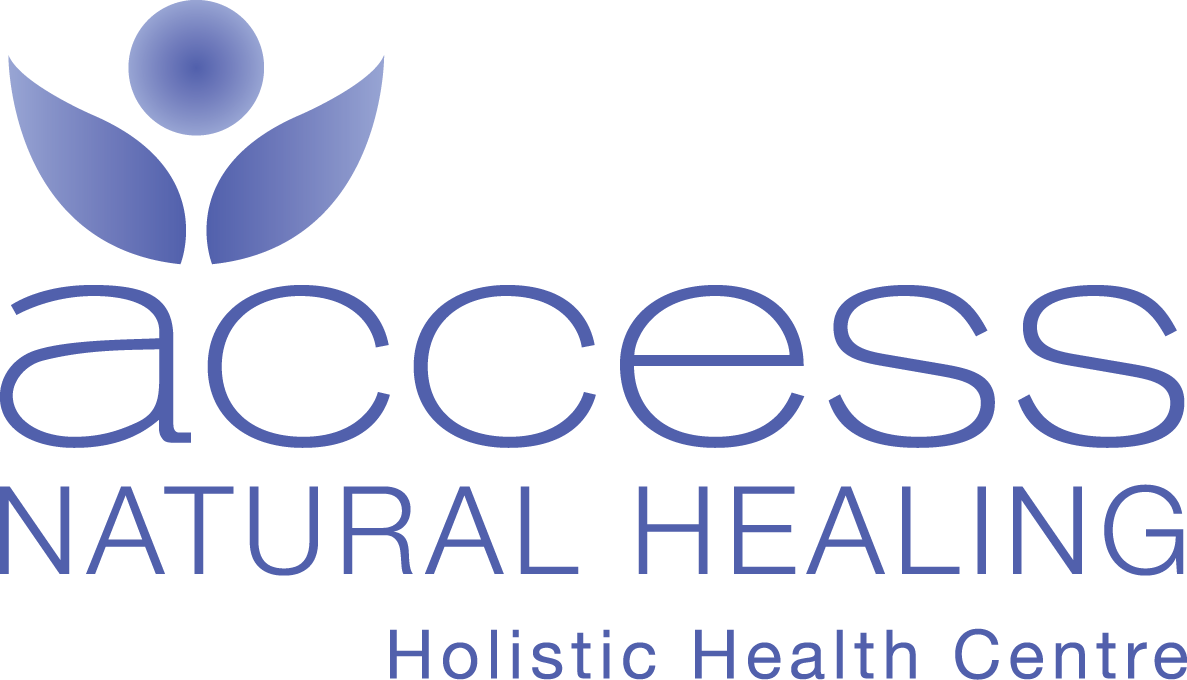scientific community covid 19 italian homeopathy
Read MoreRandomised controlled trials of homeopathy: examining the evidence
/Randomised controlled trials of homeopathy: examining the evidence
The review programme’s findings
Phase 1: Placebo-controlled RCTs of individualised homeopathic treatment (study protocol). These studies focus on ‘classical’ homeopathy, which involves in-depth consultation and an individualised prescription per patient: 32 RCTs were eligible for the review. The article reporting the findings was published in the journal Systematic Reviews in December 2014. Its statistical analysis identified an effect of individually prescribed homeopathic medicines that was greater than that of placebos and was statistically significant.
Phase 2: Placebo-controlled RCTs of non-individualised homeopathic treatment (study protocol). Each of these examined a homeopathic medicine pre-selected for its match with the typical symptoms of a given clinical condition: 75 RCTs were eligible for this review. The article reporting those findings was published in Systematic Reviews in March 2017.
The original literature search for the review programme included all RCT papers published up to and including 2011. Each new systematic review necessarily requires an updated search. The relevant flowchart for Phase 2 of included and excluded RCT papers updates the original search up to the end of 2014. There are associated detailed lists of RCT papers that are potentially eligible for systematic review and RCT papers that have been rejected from further analysis.
Phase 3: Other-than-placebo-controlled RCTs of individualised homeopathic treatment (study protocol). The relevant flowchart for Phase 3 of included and excluded RCT papers updates the original search to the end of 2015. There are associated detailed lists of potentially eligible RCT papers and rejected RCT papers.
Phase 4: Other-than-placebo-controlled RCTs of non-individualised homeopathic treatment (study protocol). This work is ongoing. The relevant flowchart for Phase 4 of included and excluded RCT papers updates the original search to the end of 2016. There are associated detailed lists of potentially eligible RCT papers and rejected RCT papers.
Researcher
Dr Robert Mathie attained BSc, then PhD, in Physiology at the University of Glasgow. During 25 years in the university sector, he published around 100 peer-reviewed journal articles and book chapters, mostly on the topic of blood flow regulation. He then held the post of Research Development Adviser at the British Homeopathic Association for 15 years during which he led clinical data collection projects with the Faculty of Homeopathy’s doctors, dentists and veterinarians. Latterly, in a key initiative to identify robust evidence in homeopathy, Robert has extended his work in reviewing and clarifying the research literature by means of a major programme of systematic reviews of randomised controlled trials. His research publications in homeopathy currently total more than 30. Robert became an independent research consultant in March 2016.
https://www.hri-research.org/hri-research/learning-more-from-existing-evidence/systematic-review-programme/
Publications related to this project
Systematic Review and Meta-Analysis of Randomised, Other-than-Placebo Controlled, Trials of Individualised Homeopathic Treatment.
Mathie RT, Ulbrich-Zürni S, Viksveen P, Roberts ER, Baitson ES, Legg LA, Davidson JRT.
Homeopathy, 2018; 107(4): 229-243 [Full text]
Randomised, double-blind, placebo-controlled trials of non-individualised homeopathic treatment: systematic review and meta-analysis.
Mathie RT, Ramparsad N, Legg LA, Clausen J, Moss S, Davidson JRT, Messow C-M, McConnachie A.
Systematic Reviews 2017; 6: 63 [Full text]
Randomised placebo-controlled trials of individualised homeopathic treatment: systematic review and meta-analysis.
Mathie RT, Lloyd SM, Legg LA, Clausen J, Davidson JRT, Moss S, Ford I. Systematic Reviews 2014; 3: 142 [Full text]
Randomised controlled trials of homeopathy in humans: characterising the research journal literature for systematic review.Mathie RT, Hacke D, Clausen J, Nicolai T, Riley DS, Fisher P.
Homeopathy 2013; 102: 3-24 [Abstract]
Spanish Flu 1918 and Homeopathy→
/Homeopathic History for Pandemics
Read MoreLiterature Review of the In Vitro and In Vivo Evidence for Homeopathic Medicines in the Treatment or Prevention of Malaria.→
/Homeopathic Treatment of Infectious Diseases. Malaria Homeopathic Treatment
Read MoreHomeopathic Prevention and Management of Epidemic Diseases.→
/history of homeopathy in flu pandemic
Read MoreSuccess with Epidemics using Homeopathy→
/homeopathy success with diptheria plague epidemic
Read MoreSpanish Flu Pandemic
/During the 1918 Spanish Flu Pandemic homeopathy shone brightly for its success. Those treated by conventional medicine had a 28% mortality rate. The mortality rate of those treated with homeopathy was a mere 0.8%.
7 Tips to Biohack Your Way to Better Health
/by Jessica Smith
https://www.womenworking.com/research-reveals-what-happens-to-the-body-when-you-walk-barefoot/
Have you heard of biohacking? It is a relatively new approach that has been around for several decades but has become more popular over recent years.
Biohacking focuses on using the biology of the human body to improve and maintain optimal health. The idea is to adapt your lifestyle so that it fits your natural body processes. Thanks to that, you will feel better, have more energy, and enhance your physical and optimal performance.
Although monitoring what you eat is one of the staples of biohacking, you should also optimize your actions and thoughts. These changes you make to your lifestyle are called “hacks,” which is how biohacking got its name.
Figure Out Which Foods Suit You
Each person is unique, and the same applies to the human body. Eating the same food will affect two people differently. One of them might not feel different, but others may feel bloated or have stomach issues.
It is why you should discover the foods that bother you and eliminate them from your nutrition. The experts call this an elimination diet, and these are the steps you should take:
Avoid eating peanuts, dairy, soy, gluten, and corn for at least three weeks. These are the most frequent allergens, but you can feel free to add any other food to the list, too.
After the three weeks go by, add the eliminated foods to your nutrition one by one. It shouldn’t take more than 2-3 days to figure out if a particular food is causing you problems. If that is the case, you should get rid of it once and for all.
It will take a bit of trial and error until you optimize your nutrition, but it will be a lifestyle change that will positively affect your long-term health.
Intermittent Fasting
Many say that this is the most effective recipe for optimizing blood weight and getting your blood sugar and digestion in order.
The idea of intermittent fasting is to monitor not only what you eat, but also when you eat. The most frequent approach is not eating for at least 12 hours each day, although you can feel free to increase the period to 16 hours. Here is how that works – for example, you eat until 8 PM today and then stop until 8 PM tomorrow.
Some people also use the alternate-day approach, which means you normally eat one day, and then only consume up to 500 calories the next day. However, this approach is a bit more demanding, which is why beginners should stick to the previous one.
Supplement Stacking
If you have any experience in bodybuilding, you are probably familiar with this term. The goal is to add a proper combination of supplements to your nutrition. Make sure to use products of reliable brands like Teragon Labs and choose formulas that you use carefully.
Feel free to include amino acids, minerals, vitamins, steroids, and any other formulas. Biohacking experts suggest that you should also include a nootropic formula, which aims to boost your brain health and performance. However, it is vital to ensure that the supplements fit well with each other. You don’t want to risk any side effects resulting from improper mixes. Moreover, it is only by coming up with the right combo that you can maximize the effects of each product.
Physical Activity
You already know the importance of the physical activity. Moreover, you may be working out and using testosterone to boost your muscles. It is great that you are exercising, but we are talking about adding physical activity to every area of your life.
For example, if you spend eight hours sitting at work, that is not healthy. An excellent hack is to get a standing desk, or even a treadmill if you want to combine work and exercise. Keep in mind to optimize your posture, and pick shoes that are comfortable. You also want to ensure that you take breaks, which means you should alternate sitting and standing every hour.
Make Sure You Get a Good Rest
You don’t have to be an expert to know that sleep is extremely important for a human body. While it is vital to get enough sleep, you also want to focus on its quality. That is why you should turn off the light in your bedroom. Furthermore, it would be best if it is completely dark, so consider blackout curtains.
Buy a simple alarm clock to wake you up in the morning, and leave your cellphone in the other room. Also, make sure that the temperature is optimal – you should keep it around 64F.
Walk Barefoot
Remember how it feels good to walk barefoot in the sand on the beach? Biohacking suggests that you should encourage barefoot walking whenever the opportunity allows you. That way, you will “connect” to the earth and allow natural currents to flow through you.
The potential benefits of this technique, which is also called grounding, includes reducing inflammation and improving sleep. In case of cold weather, go with minimalist shoes so that you can still maintain contact with the earth.
Don’t Forget to Meditate
Relaxing is very important for your overall health and wellbeing, and meditation can help you to take stress relief to the next level.
The list of advantages that meditation provides is long and includes improving focus and productivity, reducing inflammation, dealing with anxiety, and making you feel better overall. Meditation is a technique that will benefit both your wellbeing and physical health, which is why you should make enough room in your schedule to practice it every day.
The Bottom Line
As you can see, biohacking is a natural approach that helps you to optimize your lifestyle in a way that will completely fit your body biology. If it seems too hard to implement all these changes in your lifestyle at once, try adding them gradually. The important thing to remember is that biohacking is a long-term strategy that can path your way to better health and improved mental performance!
http://naturalholistichomeopathic.com/7-tips-to-biohack-your-way-to-better-health
Natural Cold, Cough, and Sore Throat Remedies Market Global Production, Demand and Forecast to 2028 Published on : Published by : hussain@factmr.com
/Natural Cold, Cough, and Sore Throat Remedies Market Global Production, Demand and Forecast to 2028
Published on : Published by : hussain@factmr.com
Highly Fragmented Market Space with Low Entry Barriers
The absence of stringent regulations for approval of natural cold, cough, and sore throat remedies has been a vital reason that has provided local and regional players with intervention-free operations-based benefits. The low entry barriers have made the nature of the natural cold, cough, and sore throat remedies market to be highly fragmented. Leading players in the natural cold, cough, and sore throat remedies market continue to focus on aggressive marketing strategies, and product launches to consolidate their position and gain a competitive edge.
Homeopathy Medicines Emerge as a Vital Growth Area for Market Players
A notable shift in consumer preferences towards natural products in all verticals has been a vital reason that has bolstered the demand for alternative medicine and therapies. Homeopathy is one form of alternative medicine that is gradually growing in prominence in the healthcare industry. The medical system is based on the belief of stimulating the human body’s natural immunity system through the consumption of a small amount of natural substances. The idea of self-healing is gradually gaining appeal amongst growing demographics around the world, in line with the awareness about side effects of conventional medicines that include includes dizziness, drowsiness, blurred vision, nausea, upset stomach, and constipation. In addition, governments around the world are promoting research and innovation in the area of alternative medication. These factors have prompted pharmacy owners to include homeopathic medicines in their product portfolio.
To garner Additional Information on the Competitive Dynamics, Get the Sample: https://www.factmr.com/connectus/sample?flag=S&rep_id=2988
Bright Prospects in Pediatric Therapeutics
Multiple studies have suggested that over the counter (OTC) cold medicine might not be effective for young infants and children. Moreover, researches have alluded potential health impacts of conventionally employed medicines, such as coma, seizures, and even mortality in children. Research by the American Food and Drug Administration concluded and confirmed the aforementioned drawbacks of conventional medicine prompting regulatory authorities to spreads awareness about the use of OTC medication for treatment of cold in children. Natural cold and sore throat remedies could potentially become the first line of defense against these ailments in children, opening up new opportunities for the natural cold, cough, and sore throat remedies market.
Demand Remains Upheld by Pervasive Prevalence of Respiratory Diseases
Growing instances of respiratory diseases due to modern lifestyle choices, and exposure to growing concentration of pollutants in the environment, is expected to underpin growth of the natural cold, cough and sore throat remedies market. The World Health Organization states that, currently, nearly 65 million people suffer from moderate or severe chronic obstructive pulmonary disease (COPD), while over 330 million people are diagnosed with asthma worldwide. Natural cold, cough, and sore throat remedies can potentially help in suppressing the symptoms of these respiratory diseases, and provide comfort to patients. Further, the treatment of chronic respiratory diseases involves heavy consumption of conventional medications, and natural cold, cough, and sore throat remedies provide a natural alternative to conventional treatment. Moreover, the treatment of chronic diseases is gradually becoming financially overbearing for consumers and governments alike, with studies suggesting the direct and indirect costs incurred for conventional treatment of COPD and asthma to be almost US$ 90 billion in Europe alone. Natural cold, cough, and sore throat remedies are available at relatively lower prices, providing an affordable alternative to aid in the overall reduction of treatment costs.
https://markettalknews.com/natural-cold-cough-and-sore-throat-remedies-market-global-production-demand-and-forecast-to-2028/
Homeopathy for shrimp aquaculture: increased survival and superoxide dismutase activity in juvenile white shrimp Litopenaeus vannamei during a bacterial pathogen-challenge.→
/Homeopathy for shrimp aquaculture: increased survival and superoxide dismutase activity in juvenile white shrimp Litopenaeus vannamei during a bacterial pathogen-challenge.
Authors:
Mazón-Suástegui, José Manuel; Bernal, Milagro García; Abasolo-Pacheco, Fernando; Avilés-Quevedo, Araceli; Campa-Córdova, Ángel I.; Rodríguez-Jaramillo, Carmen; Marrero, Ricardo Medina
Affiliation:
Centro de Investigaciones Biológicas del Noroeste (CIBNOR, S.C.), México
Source:
Homeopathy (HOMEOPATHY), Feb2016; 105(1): 33-33. (1p)
Publication Type:
Article - abstract
Language:
English
Minor Subjects:
Homeopathic Agents -- Therapeutic Use; Agriculture; Fish -- Classification; Immunity; Superoxide Dismutase
Journal Subset:
Alternative/Complementary Therapies; Europe; Expert Peer Reviewed; Peer Reviewed; UK & Ireland
ISSN:
1475-4916
MEDLINE Info:
NLM UID: 101140517
Entry Date:
20160331
Revision Date:
20160331
DOI:
http://dx.doi.org/10.1016/j.homp.2015.12.057
Accession Number:
112678428
Database:
CINAHL Complete













